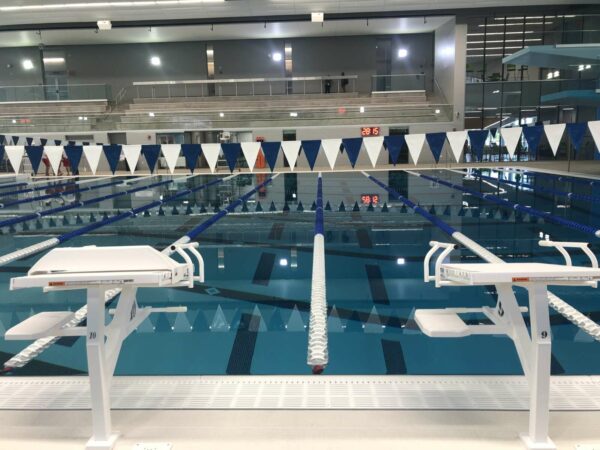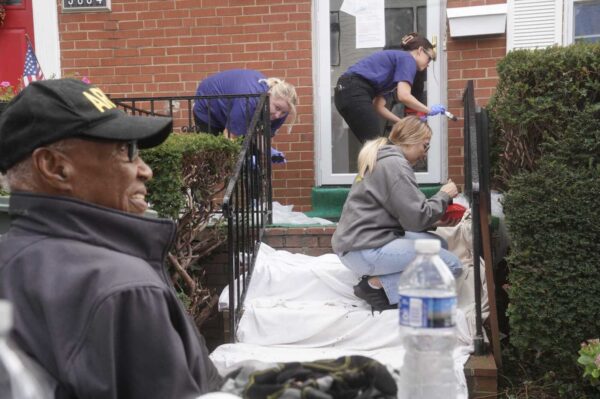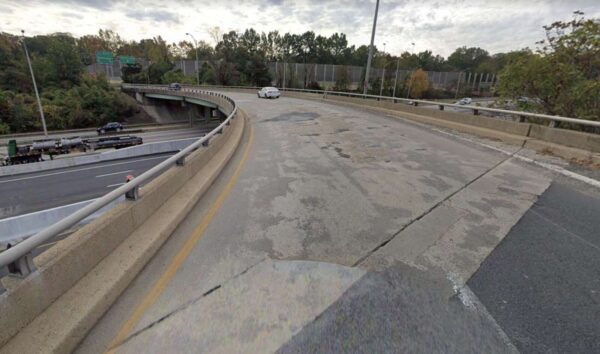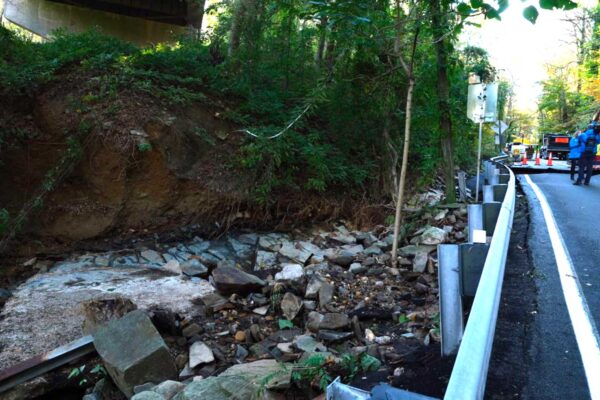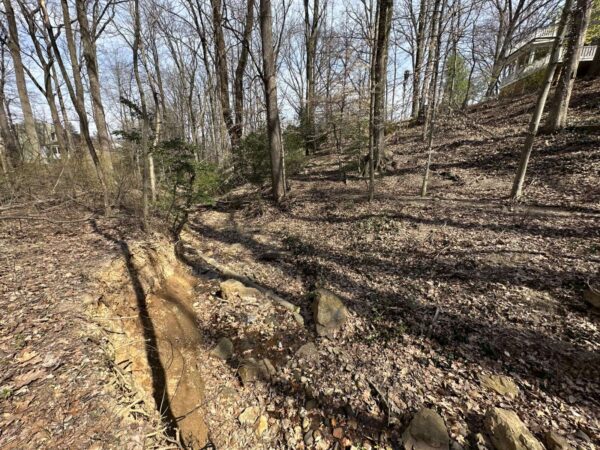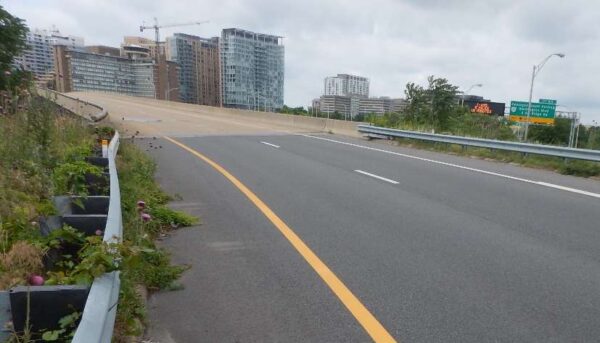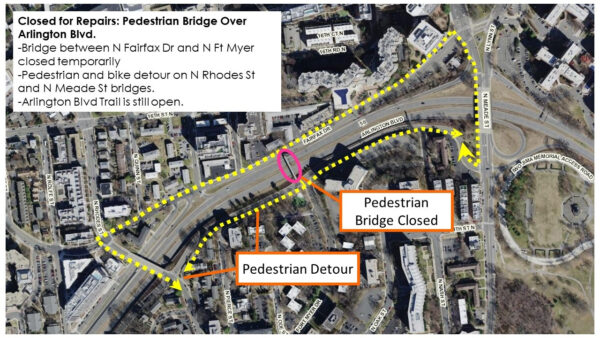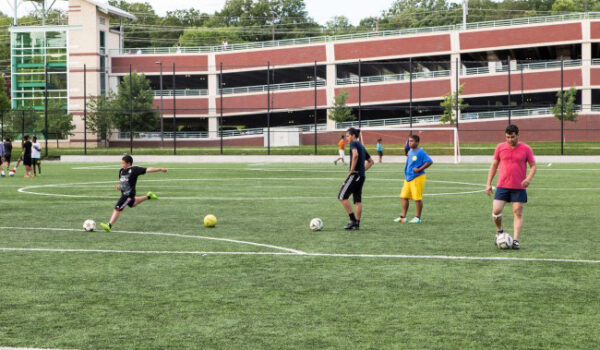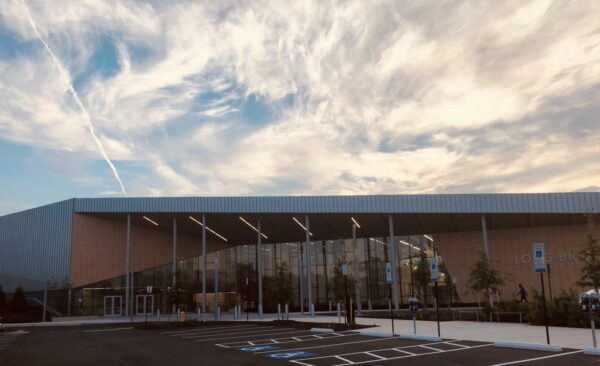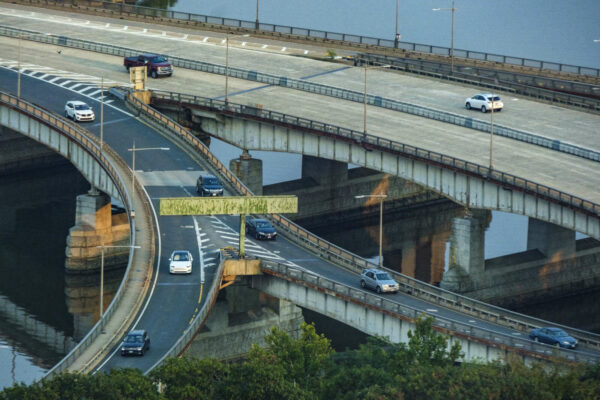(Updated at 11:15 a.m.) The 50-meter pool at the Long Bridge Aquatics & Fitness Center will have shorter hours for several months for needed repairs.
The pool area will close at 8 p.m., about two hours early, on weekdays starting next Monday, Jan. 29 to replace leaky pipes and water-damaged ceiling tiles caused by a corroded sprinkler hose, the Arlington County Dept. Parks and Recreation said in a press release. Weekend hours will not be affected.


